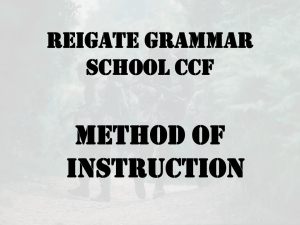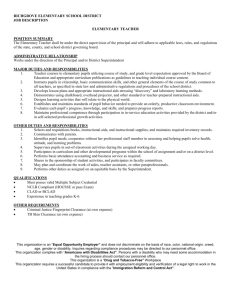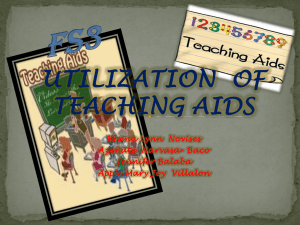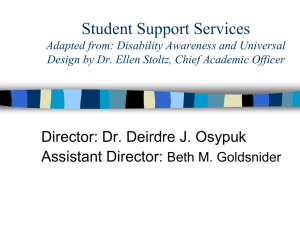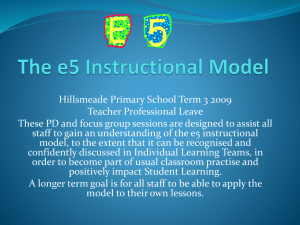Chapter 7 Instructional Aids and Training Technologies
advertisement
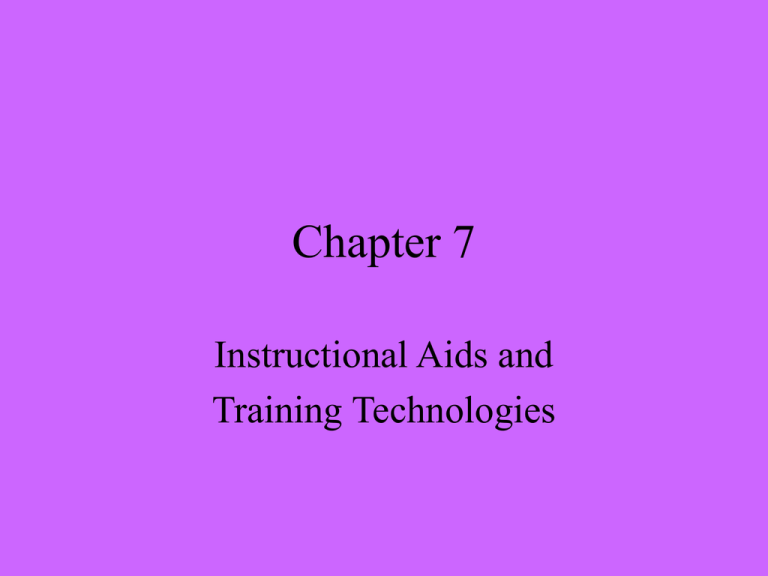
Chapter 7 Instructional Aids and Training Technologies Review Chapter 5 Teaching Methods • Lecture • Guided Discussion • Demonstration Performance • Group Learning • Computer Based Training Review Chapter 6 Critique and Evaluation Characteristics of a Good Critique Objective Flexible Acceptable Comprehensive Constructive Organized Thoughtful Specific Evaluation • Has learning occurred? • Evaluation – Oral Quizzes – Written test – Performance test Written Test • Characteristics of a good test – Reliable – Valid – Usable – Objective – Comprehensive – Discriminate Instructional Aid Theory Enhance main points Usable bits Simple Advantages of Visual Aids Retention of material Overcome language barriers Clarify relationships Save time Guidelines for Instructional Aids • • • • • • Support lesson objective Be student centered Build on previous lesson Be consistent with learning principles Appeal to students Maintain attention and interest Guidelines for Instructional Aids • • • • • • Encourage student participation Provide stimuli and reinforcement Have high quality Be complete and accurate Contain appropriate terminology Be sequenced Guidelines for Instructional Aids • Be easy to understand • Include safety precautions Types of Instructional Aids Chalk or Marker Board • Advantages –Reusable –Joint instructor/student activity Chalk or Marker Board • • • • • • • Keep board clean Erase irrelevant material Keep required materials close Practice Write large Don’t overcrowd Keep it short and simple Chalk or Marker Board • • • • • • • • Make one point at a time Make neat drawings Use colored markers Underline for emphasis Use upper part of board Stand to one side Use pointer Adjust lighting Supplemental Printed Material • • • • • • • • Photos Pictures Drawings Murals Cartoons Charts Diagrams Graphs Enhanced Training Materials • Training Syllabi • Maneuvers Guidebook • • • • Projected Materials Videos Multimedia Mockups Future Developments?
